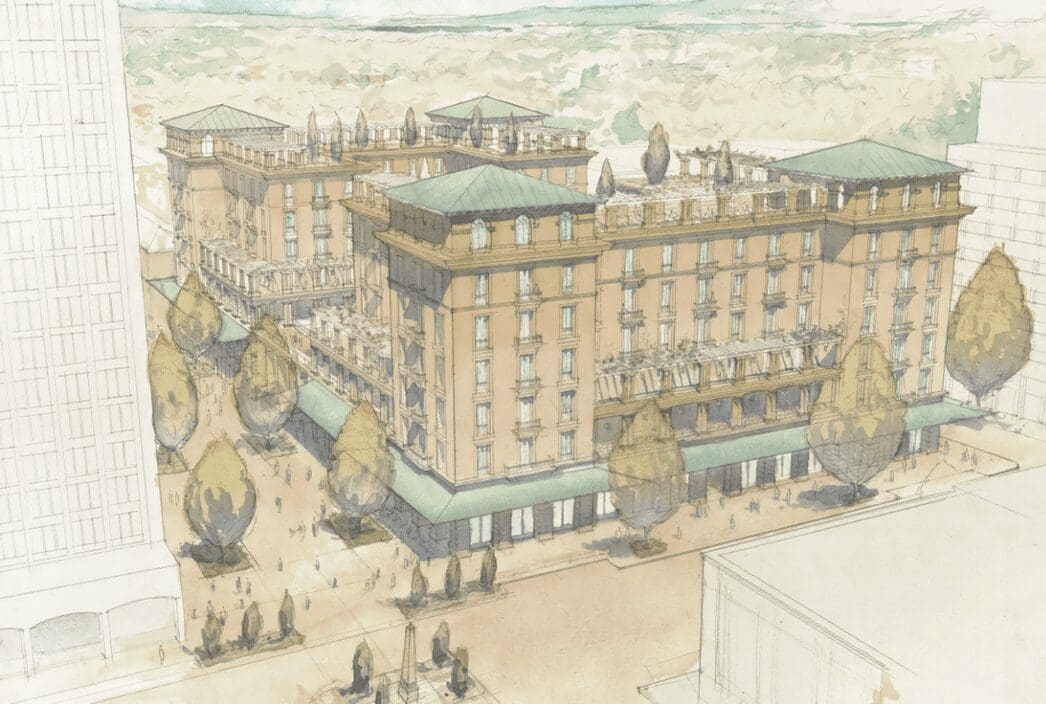Search Posts
Recent Posts
- U.S. Carries Out Limited Strike on Iran’s Known Nuclear Sites (Updates) June 22, 2025
- A Greener View: E. Coli vs. Vegetables, and Your Garden – Jeff Rugg June 22, 2025
- Rhode Island Weather for June 22, 2025 – Jack Donnelly June 22, 2025
- Ask Chef Walter: The Art and Science of Baking – Chef Walter Potenza June 22, 2025
- Gimme’ Shelter: Aurora is waiting for a home at the Providence Animal Control Center June 22, 2025
Categories
Subscribe!
Thanks for subscribing! Please check your email for further instructions.

Bringing back beauty, Australia – David Brussat
by David Brussat, Architecture Here and There, contributing writer on architecture
The winning design of the “Sydney is Beautful” competition, from Sydney-based M.J. Suttie architects.
Australia has incredible nodes of beauty. It has to. It is its own continent, right? The fact that 80 percent of its population in 1820 consisted of convicts should not matter in a nation, or rather a British colony, founded by Britain as a place to receive transported prisoners from its crowded gaols – that should not matter one whit. On my bucket list is to read Fatal Shore, Robert Hughes’s epic history of Australia’s founding (628 pages).
I recall a photo from Street Design (2013) by Victor Dover and John Massengale of Centre Place, a street or alley in Melbourne that gripped me. A shot of Collins Street in 1950, of which I wrote in 2014 (“Heritage thought experiment“), is also terribly evocative, and makes me yearn for a trip to Melbourne. Same, I assume, with other cities in the land down under.
But then there is an article, “10 of the Best Historical Sites and Heritage Locations in Australia,” which includes the National Museum of Australia, which looks like a military bunker in an earthquake. The National Museum of Australia! C’mon, guys! This is all too typical of such articles. And most of the other sites, including several prisons, don’t seem to be located in historic districts, though I could be mistaken about some of them. And no historic districts are listed in the article, either.
Recently, however, an organization called Street Level Australia held a competition to re-imagine a district in Sydney called Woolloomooloo. (Wow! Woonsocket wants to hold your beer!) Street Level Australia was founded by Milly Main and is dedicated to building new places of beauty in Australia’s cities and towns. Its competition was covered by the Sydney Morning Herald in “From Bleak to Beauty: Grand Designs to Transform an Unloved City Block.” The competition generated submissions, 13 in all, from traditional architects half a world away; Historical Concepts, the erudite firm in Atlanta led by Andrew Cogar; Robert Adam, the famous British architect; as well as M.J. Suttie, from Sydney, whose design won the competition. On the judging panel was Richard Economakis, the celebrated professor of architecture at Notre Dame, who commended the design by Winston Grant-Preece as the “most Sydney.”
The designs pictured in the Herald article, by Michael Koziol, seem excellent to me. Let the experts decide (as indeed they already have).
Cities Minister Rob Stokes (oh! to have a “cities minister”! Um, on second thought, maybe that’s not such a good thing) presented the winners. In the words of the Herald’s Koziol, Stokes “lamented that Sydney was chosen as the set for the 1999 film The Matrix because the CBD skyline is so generic and bland. ‘We want places that are not vanilla but toward a vernacular,’ he said.”
The Matrix? Ghastly movie. Most unfortunate indeed. It tells you everything about where architecture is headed around the world today.
But, writes Koziol, “The government did not solicit, approve or oversee the competition, and there is no suggestion any of the designs will ever see the light of day.”
What?! Such a shame. Such a waste. But maybe not. It seems the competition was held in order to raise consciousnesses about whether it is still possible to build beautiful places. The attitude summarized by “They don’t build it like they used to” imprisons whole societies under the assumption that “They can’t build it like they used to” when in fact they can indeed build it like the used to: They merely need to want to build it like they used to.
Perhaps, in time, under the gentle persuasion of Milly Main and her organization, the cities minister, the Melbourne government, and the Australian continent will come to its senses and build Woolloomooloo and many other places down under as places of beauty. What an idea!
(“Heritage thought experiment,” my 2014 blog post linked above, includes a long passage explaining why this situation prevails to this day.)
To read other articles by David Brussat: https://rinewstoday.com/david-brussat-contributing-writer/

My freelance writing and editing on architecture and others addresses issues of design and culture locally and globally. I am a member of the board of the New England chapter of the Institute of Classical Architecture & Art, which bestowed an Arthur Ross Award on me in 2002. I work from Providence, R.I., where I live with my wife Victoria, my son Billy and our cat, Gato. If you would like to employ my writing and editing to improve your work, please email me at my consultancy, dbrussat@gmail.com, or call (401) 351-0451




